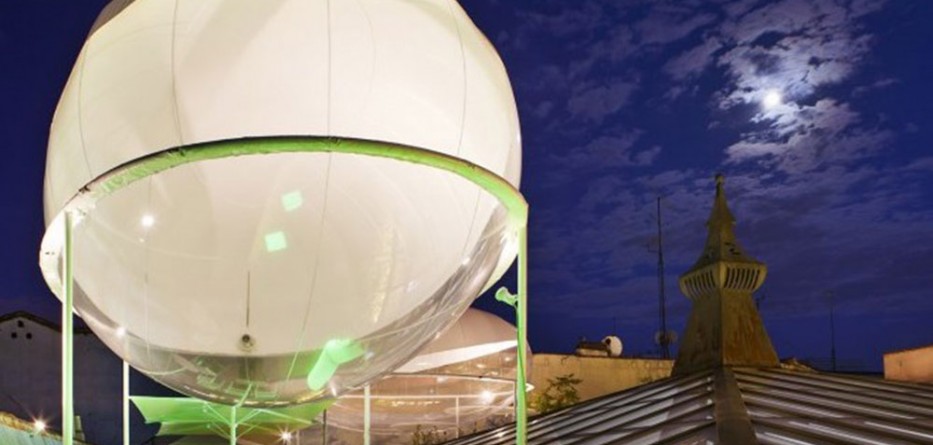City centers are touted for having lower carbon footprints than their suburban counterparts. Shorter commutes and smaller homes may make this the case, but urban heat islands complicate this sustainability issue. Clouds Observatory is a design strategy for reducing heat pollution—it’s a set of floating pods that deflect heat in a stylish, yet seamless way.
Spanish architect Nina Gonzalez Vives designed the plastic clouds as a tool for decreasing urban heat, with the least possible power consumption.
Installed on a rooftop terrace in Madrid, the floating plastic pods are meant to withdraw dense air and regulate outdoor temperatures and the accompanying structures are meant to sustain the outdoor aesthetic.

According to the EPA, roof and pavement surfaces can be up to 50 to 90 degrees (fahrenheit) hotter than the surrounding environment. Naturally, this heats up the local atmosphere, and electricity usage rises as people switch on their AC units. When stormwater runoff passes over these surfaces, the heated water makes its way to streams, rivers, and lakes where it can alter the natural aqua life ecosystems.

Rather than convert city rooftops into giant reflectors or gardens, the Clouds Observatory envisions space for people to enjoy the surrounding cityscape, and preserve it at the same time.

In addition to shading sun and regulating water evaporation, the installation has the potential to be regulated by modern technologies. Such spaces can host “software instruments [that] model the air movement, the materials radiation and the temperatures.”
The installation sheds light on what could be a future of urban cooling systems that require little structural investment, and potentially lower costs. And while cool roofs like this one might not capture 100 percent of rainwater, as a green roof might, hybrid models could be designed for optimal heat reduction.
Read More: Clouds Observatory
Photos: Carolina Gonzalez Vives









